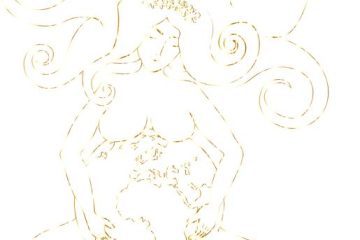In the realm of ecological thinking, there exists a captivating theory that intertwines the delicate balance of our planet with the interconnected web of life. Embark on a journey to uncover the roots of the Gaia Hypothesis, a concept that posits Earth as a self-regulating organism, pulsating with harmony and complexity. Delve into the origins of this thought-provoking idea that challenges conventional scientific perspectives and invites us to explore the profound relationship between nature and humanity. Join us as we unravel the fascinating beginnings of the Gaia Hypothesis and its enduring impact on our understanding of the world we inhabit.
Table of Contents
- Exploring the Roots of the Gaia Hypothesis
- Unveiling the Vision of James Lovelock
- The Role of Lynn Margulis in Gaia Hypothesis Development
- Implications and Applications of Gaia Hypothesis Today
- Q&A
- Closing Remarks
Exploring the Roots of the Gaia Hypothesis
The Gaia Hypothesis, often viewed as a revolutionary concept in ecological thinking, delves into the interconnectedness of Earth’s biosphere and how it functions as a self-regulating organism. Initially proposed by renowned scientist James Lovelock, this hypothesis sparked a shift in perspective towards Earth as a living, breathing entity capable of maintaining conditions suitable for life.
Within the realms of the Gaia Hypothesis lie intriguing discussions on how the Earth’s atmosphere, oceans, and land interact in a dynamic dance of harmony. From the intricate web of ecosystems to the subtle balance of gases in the atmosphere, exploring the origins of this hypothesis unveils a fascinating narrative of interdependence and resilience present in our planet’s intricate systems. In essence, the Gaia Hypothesis challenges us to perceive Earth not just as a mere collection of habitats but as a unified, self-regulating entity worthy of reverence and study.
Unveiling the Vision of James Lovelock
In the realm of environmental science, few names carry as much weight as James Lovelock. His groundbreaking Gaia hypothesis has sparked widespread debate and contemplation among scientists and environmentalists alike. Lovelock’s vision of the Earth as a self-regulating, living organism challenges traditional views of the planet and has reshaped our understanding of the intricate balance of ecosystems.
Through Lovelock’s lens, the Earth is not merely a collection of separate components but a complex, interconnected system where all living organisms, oceans, and atmosphere work together in harmony. The Gaia hypothesis suggests that the Earth itself behaves like a single, self-sustaining entity, maintaining conditions conducive to life. This holistic perspective underscores the importance of preserving the delicate balance of nature for the well-being of all its inhabitants.

The Role of Lynn Margulis in Gaia Hypothesis Development
In the realm of ecological science and planetary interconnectedness, Lynn Margulis stands as a visionary figure whose contributions have significantly shaped the Gaia hypothesis. By delving into the intricate symbiosis among organisms and the Earth itself, Margulis brought forth a paradigm-shifting perspective that challenged traditional scientific beliefs and paved the way for a deeper understanding of our planet as a living, self-regulating entity.
Margulis’s groundbreaking work emphasized the interconnectedness of all life forms and their collective impact on the Earth’s systems. Through her research on microbial evolution and the role of symbiosis in shaping ecological dynamics, she provided compelling evidence in support of the Gaia hypothesis. Her insights into the intricate web of relationships that sustain life on Earth underscored the importance of viewing the planet as a complex, interconnected whole where every living being plays a vital role in maintaining the delicate balance essential for planetary health and sustainability.
Implications and Applications of Gaia Hypothesis Today
The Gaia Hypothesis, proposed by James Lovelock in the 1970s, revolutionized our understanding of the interconnectedness of Earth’s systems. Today, this bold theory continues to inspire researchers, environmentalists, and thinkers worldwide. By viewing the Earth as a single, self-regulating organism, the implications of the Gaia Hypothesis extend far beyond scientific discourse.
In practical terms, embracing the principles of Gaia can lead to profound shifts in how we approach environmental conservation, urban planning, and sustainability efforts. By recognizing the Earth as a complex web of interdependent systems, we can strive for harmony with nature, fostering a healthier planet for future generations. Integrating Gaia’s insights into policymaking and collective action can pave the way for a more holistic and empathetic relationship with our home planet.
Q&A
**Q: What is the Gaia Hypothesis and how did it originate?**
A: The Gaia Hypothesis proposes that the Earth functions as a self-regulating system that maintains conditions necessary for life. It suggests that living organisms interact with their inorganic surroundings to form a complex, self-regulating system that helps ensure the planet’s habitability. The hypothesis was first proposed by chemist James Lovelock and microbiologist Lynn Margulis in the 1970s.
Q: How did the idea of Gaia come about?
A: The concept of Gaia draws inspiration from Greek mythology, where Gaia was the primal Earth goddess. Lovelock adopted this name to encapsulate the idea of Earth as a living organism. Through their research, Lovelock and Margulis observed certain feedback mechanisms in the Earth’s ecosystems that seemed to act like a living organism’s regulatory systems.
Q: What are the key principles of the Gaia Hypothesis?
A: The Gaia Hypothesis is based on several key principles, including the idea that the Earth is a self-regulating system, that life and the environment are interconnected, and that the biosphere plays an active role in maintaining conditions conducive to life. It suggests that life on Earth, from microorganisms to plants and animals, interacts with the planet’s atmosphere, oceans, and geology to create a stable and balanced environment.
Q: How has the Gaia Hypothesis influenced environmental thinking?
A: The Gaia Hypothesis has had a significant impact on how we view the Earth and our relationship with the environment. It has inspired a deeper appreciation for the interconnectedness of all life forms and the importance of preserving ecological balance. The idea of Gaia challenges us to consider the Earth as a fragile and intricate system that requires our care and stewardship.
Q: Is the Gaia Hypothesis widely accepted in the scientific community?
A: While the Gaia Hypothesis has sparked interesting discussions and debates within the scientific community, it is still considered a hypothesis rather than a fully established theory. Some scientists support the idea of Earth behaving like a living organism, while others remain skeptical. Ongoing research and study continue to explore the complexities of Earth’s systems and the extent to which they exhibit self-regulating characteristics.
Closing Remarks
As we delve deeper into the origins of the Gaia hypothesis, we uncover a tapestry woven with threads of scientific inquiry, ecological interconnectedness, and philosophical contemplation. This theory, proposed by the visionary James Lovelock and Lynn Margulis, challenges us to reexamine our relationship with the planet we call home. By viewing Earth as a complex, self-regulating system, we are compelled to acknowledge our role as mere players in a grand symphony of life. Join us on this journey of discovery, as we continue to unravel the mysteries of Gaia and our place within her intricate web. Stay curious, stay connected, and let the spirit of Gaia guide us towards a deeper understanding of our shared existence on this beautiful blue planet.



0 Comments